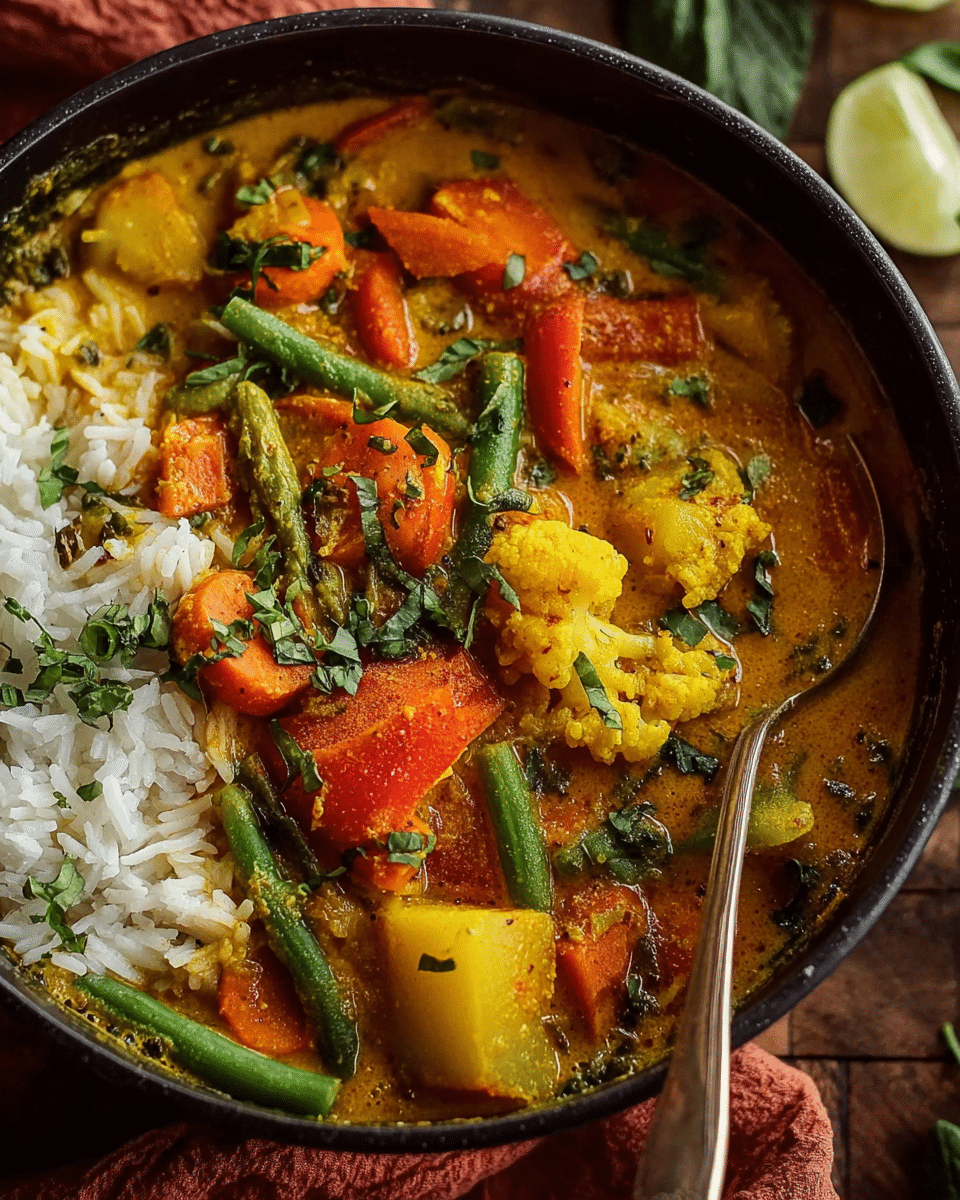This vegetable curry with coconut milk is a warm, comforting dish packed with rich flavors and vibrant vegetables. The blend of curry powder, turmeric, cumin, and ginger creates a fragrant and aromatic base, while the creamy coconut milk adds a smooth richness to the curry. Perfect for a cozy dinner, this dish is both healthy and satisfying.
Full Recipe:
Ingredients
-
1 tablespoon olive oil
-
1 onion, finely chopped
-
2 cloves garlic, minced
-
1 tablespoon grated ginger
-
1 tablespoon curry powder
-
1 teaspoon turmeric
-
1 teaspoon cumin
-
1/2 teaspoon chili powder (optional for heat)
-
2 medium carrots, peeled and diced
-
1 zucchini, diced
-
1 bell pepper, chopped
-
1 potato, peeled and diced
-
1 can (14 oz) diced tomatoes
-
1 can (14 oz) coconut milk
-
1 cup vegetable broth
-
2 cups spinach, chopped
-
Salt and pepper to taste
-
Fresh cilantro for garnish (optional)
Directions
-
Heat olive oil in a large pot over medium heat. Add chopped onion, garlic, and grated ginger, and sauté until fragrant, about 3-4 minutes.
-
Stir in curry powder, turmeric, cumin, and chili powder. Cook for another 1-2 minutes to release the spices’ flavors.
-
Add carrots, zucchini, bell pepper, and potato to the pot, stirring to coat the vegetables with the spices.
-
Pour in the diced tomatoes, coconut milk, and vegetable broth. Bring to a simmer and let cook for 20-25 minutes, or until the vegetables are tender.
-
Season with salt and pepper to taste. Stir in the chopped spinach and let it wilt for 2-3 minutes.
-
Serve hot, garnished with fresh cilantro if desired.
Nutrients
-
Calories: 250 kcal per serving
-
Servings: 4






